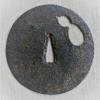-
Posts
5,959 -
Joined
-
Last visited
-
Days Won
19

ROKUJURO replied to mercierarmory's topic in Translation Assistance

ROKUJURO replied to obiwanknabbe's topic in General Nihonto Related Discussion

ROKUJURO replied to mercierarmory's topic in Translation Assistance

ROKUJURO replied to Nihontocollector19's topic in Tosogu

ROKUJURO replied to Nihontocollector19's topic in Tosogu

ROKUJURO replied to LakeBum's topic in Auctions and Online Sales or Sellers

